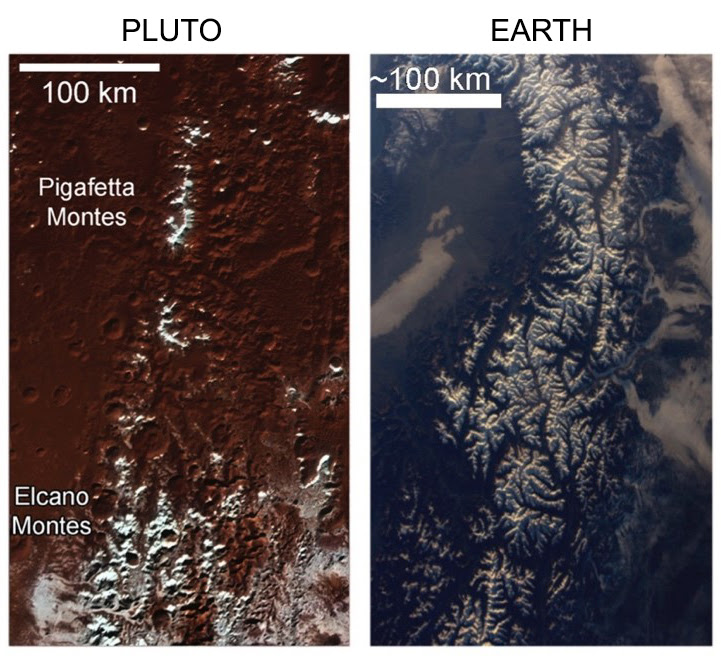
The Snows of Pluto
In 2015, the New Horizons spacecraft discovered magnificent snow-capped mountains in Pluto, strikingly similar to the mountains on Earth. Such an amazing sight was never seen elsewhere in the Solar System.
Pluto’s basic bedrock structure is composed of water ice, but this dwarf planet -almost 40 times further from the Sun than us- is so cold that the ice forming Pluto’s mountains is much harder than the rocks on Earth.
Scientists spotted icy mountaintops in the Pigafetta Montes and Elcano Montes mountain ranges in Pluto’s dark equatorial Cthulhu region. The mountains were strikingly similar to the snow-covered mountain ranges on Earth. However, they figured out that the snowcaps on Pluto’s magnificent mountains have formed from the top down, the exact reverse of how they form on Earth.
So where do these snowcaps on Pluto come from? An international team led by CNRS scientists carried out this research published in Nature Communications.
First, the exact composition of this ice in Pluto was uncertain. When the researchers determined methane, they did not know whether it was pure frozen methane, or frozen methane diluted with frozen nitrogen, or a mixture of both. The uncertainty about its composition left the question of how they formed unanswered.
To help solve this mystery, scientists studied high-resolution data from the New Horizons spacecraft, focusing on the composition of frost at high altitudes. This new analysis revealed that the snowcap frost consisted of almost pure methane, with traces of frozen nitrogen.
Just like water vapour on Earth, methane is a trace gas in Pluto’s atmosphere. To understand how the same landscape could form in such different conditions, scientists used a climate model of the dwarf planet, which revealed that Pluto’s atmosphere at high altitudes was rich in gaseous methane.
As a result, the amount of methane required to condense is found on heights where mountain peaks reach. At lower altitudes, air contains too little methane for ice to form.
This discovery teaches us that there are many physical and dynamic processes in space that we still do not know about. Studying Pluto and other planets is important as they are natural laboratories for exploring and investigating the diversity of possible climates – which, in return, allows us to better understand our own climate.
REFERENCES
- 1. https://www.space.com/pluto-mountains-methane-snowcaps-form-reverse.html
- 2. https://phys.org/news/2020-10-mountains-pluto-snowcapped-earth.html
